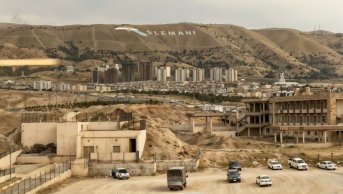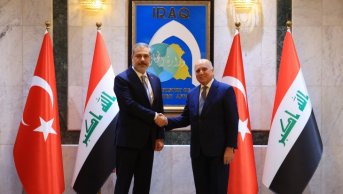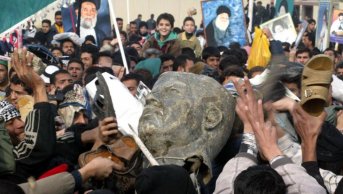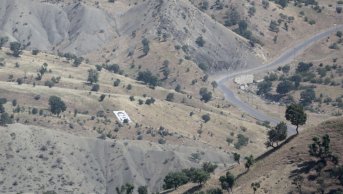Tikrit Operation in Iraq and It’s Aftermath
.jpg)
Visiting Samarra district of Saladin Governorate, on March 1st, President of Iraq Haider Al-Abadi announced that a rescue operation for Saladin’s central town, Tikrit, which had been under ISIS’s control, has been launched. Tikrit Operation brought together different dynamics regarding both its nature and future of combat against ISIS. Having been one of the settlements seized by ISIS right after Mosul, Tikrit has an extremely strategic position since it is located almost in the center of Iraq and includes north-south link roads within its boundaries. Therefore, taking back Tikrit from ISIS by Iraqi Government would be a preparation for a possible operation towards Mosul and Anbar. The operation is launched by under the management of an armed unit known as Volunteer Fighters. This unit is called “Al Hashid al Sha'bi” in Arabic and includes mostly Shiah militia groups.
Samarra has been selected as the center of the operation. Choosing of Samarra as the operational center for Tikrit draws attention. Along with being one of the few towns of Tikrit that is controlled by Iraqi Government, Samarra has been coming into prominence due to its historical importance and being a starting point of the main events shaping policy in Iraq after 2003. Samarra is an important area for Shiites. Al-Askari Shrine is in Samarra. Al-Qaeda attacked to Al-Askari Shrine in 2006 and after this assault in February, sectarian tension was inflamed. ISIS also headed towards Tikrit, Anbar and Samarra at the beginning of Mosul operation; afterwards, Ayatollah Ali Al-Sistani gave a fatwa for all-out war against ISIS. Indeed, ISIS’s attack against Samarra was prevented with the support of volunteer fighters and Samarra remained under Iraqi Government’s control. Samarra incident brought Al Hashid al Sha'bi to the agenda of Iraq and made them more visible. Therefore, it is meaningful to choose Samarra as a center for Tikrit Operation. It is possible to say that by choosing Samarra as an epicenter for the operation, a psychological message was given to ISIS. Additionally, Samarra has a strategic position regarding logistic support since it is located in the center of main road route between Tikrit and Bagdad. Hence, Samarra comes into prominence considering both Baghdad’s support to Tikrit Operation and presence of Al Hashid al Sha'bi.
On the other hand, Tikrit Operation is important since it is the first grand operation in which Sunni tribe members participated among Al Hashid al Sha’bi. Approximately 25-30 thousand people composed of Iraqi Army and Police joins the operation alongside with Al Hashid al Sha’bi. It is known that this force composes of 2.500-3.000 of Sunni fighters. Moreover, it is said that operations for Albu Ajel and al-Alam, towns of Tikrit, was launched under the leadership of Sunni fighters who were supported by Police and Army of Iraq, and Sunni fighters rescued their own region. It is known that Sunni fighters from some towns of Tikrit such as al-Shergat, Beji, Al-Alam, Albu Ajel, al-Dour are willing to participate in the operation for the center of Tikrit.
Yet, as of the current situation, it is difficult to say that progress towards center of Tikrit has been made. Forces against ISIS, which has made rapid progress around Tikrit in few days, could not enter the city center in the same pace. It is stated that ISIS laid a significant amount of mines in lines through which can be entered into the city, attacked with improvised explosive devices and suicide bombers, and blocked entrance to the city by placing snipers in many locations. In the current situation, the coalition forces’ not conducting any airstrikes, slows down the fighters’ entrance to the city. Yet, it is possible to say that the Iraqi Government acts in a responsible manner. Looking back to the coalition forces’ air strikes against ISIS in Ayn al-Arab (Kobane), it could be argued that the Central Government does not want to face a potential destruction of the city. However, it is seen that ground operation does not bring any solution for now.
On the other hand, the operation unearthed Iran’s presence in Iraq in a clear way. For the first time, Iran officially announced that it has a commander in Iraq to lead the operation. Although Iran did not mention a specific name, it is known by everybody that the commander is Qasem Suleimani, the head of Iran’s Quds Force. News related to the allegation that Iran has not sent an ordinary commander, but one of the most active operatives in the Middle East, who took part in many operations in Iraq is prominent in many social media and newspapers in Iraq. Qasem Suleimani is seen as Iran’s “Lawrence of Arabia” by some Middle Eastern academics and researchers. Indeed, it is quite common to see his photos taken in different places of the region. It is claimed that Suleimani took part in operations in Syria in support of Assad regime and supported Hezbollah in Lebanon. It should also be remembered that Suleimani attended to the funeral of Imad Mughniyeh’s son, Jihad Mughniyeh, who was killed by Israel’s attack against Hezbollah. This reflects Iran’s activity in the region. After ISIS operations, Iran’s activity in Iraq became more prominent. For this reason, Suleimani’s part in Tikrit operation includes many massages in it. Tikrit, mainly populated by Sunnis, is the hometown of Iraq’s ousted leader Saddam Hussein, who is reminisced by many Sunnis today. Both Hussein’s birth place and graveyard are in Tikrit. Qasem Suleimani is an officer that took part in 1980-1988 Iran-Iraq War and fought against Iraq. Conducting an operation to rescue Tikrit with the support or under the control of an Iranian general could be regarded as a message for Sunnis and Saddam supporters.
In conclusion, the importance and success of the Tikrit Operation will not only set an example for future operations of Anbar, Hawija, Mosul, but also will pave the way for these operations. Sunni fighters’ support with joining to Al Hashid al Sha'bi and their success will be important for other regions as well. The real problems at this point are the questions of whether Shia militia groups in Al Hashid al Sha'bi will leave regions under their control to the people of these regions and whether an ethnic and sectarian balance in the army and the police force could be established. In the case of wiping ISIS out of Tikrit, Tikrit’s position for Sunnis will set an example of Sunni’s help to the central government in other regions. If Sunni expectations are not met in Tikrit, it is possible to argue that Sunni groups would cease to support the central government and ISIS would strengthen again. Therefore, Sunni’s inclusion in both the fight against ISIS and the political process has paramount importance. This way it will be possible to cut the local support to ISIS. However, it should also be stated Iran’s increasing presence in the field disturbs Sunnis. Additionally, Kurds’ activity, especially around Kirkuk, and control of several Sunni villages is another issue that makes Sunnis disturbed. For these reasons, the need for a holistic and integrated strategy against ISIS becomes more apparent. Ousting ISIS from Tikrit with a holistic strategy will set an example and play a facilitator role in the fight against ISIS in other regions.










